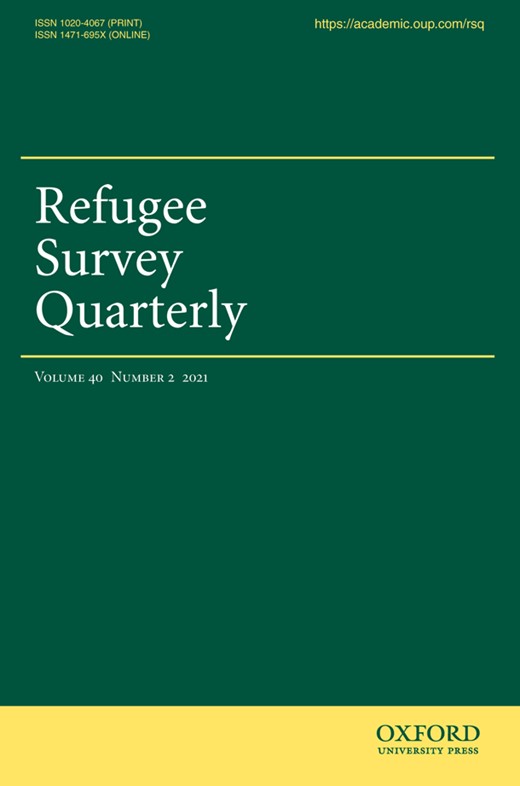-
Views
-
Cite
Cite
David Cantor, Nicholas Maple, Contemporary Perspectives on Internal Displacement in Africa: An Introduction to the Refugee Survey Quarterly Special Collection, Refugee Survey Quarterly, Volume 40, Issue 2, June 2021, Pages 139–143, https://doi.org/10.1093/rsq/hdab008
Close - Share Icon Share
Extract
On behalf of the editorial team at the Refugee Survey Quarterly,1 we are proud to present a Special Collection of research on the theme of internal displacement in Africa. Each of the five articles in this journal issue provides a distinct contemporary perspective on how internal displacement, and the response to it by governments, agencies, and local political and economic actors, plays out on the African continent. Moreover, to shed new light on this phenomenon, the collection of articles brings together a range of different disciplinary views, encompassing analyses from the standpoint of law, governance, economics, health, and social and political science. We are delighted to be able to offer a platform to publish these new analytical contributions to the study of internal displacement from researchers working in and on Africa.
Internal displacement represents an important topic in the field of forced displacement research. In numerical terms alone, the scale of internal displacement globally is momentous. The figures for last year estimate that, at the end of 2020, some 55 million people were living in situations of internal displacement across the world, 48 million as a result of conflict and violence, and 7 million as a result of disasters.2 Indeed, such estimates suggest the number of internally displaced persons (IDPs) is far greater than that of refugees or other forced migrants.3 Moreover, in terms of poverty and access to health, the available data suggest that IDPs tend to experience worse outcomes than other conflict-affected populations, at least in contexts where internal displacement is driven by conflict or violence.4 Furthermore, internal displacement clearly generates significant social, political, economic, cultural, and legal challenges for affected countries at the local and national levels.



